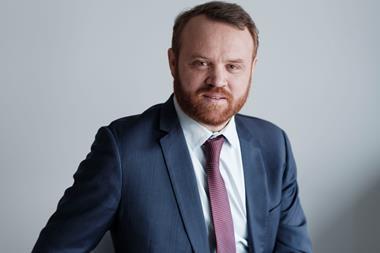EUROPE – Anders Sundström is stepping down as chief executive at Folksam, the pensions and insurance provider, as soon as a successor has been hired.
Sundström is leaving his role because he has been nominated as the new chairman of the board for Swedbank, the banking and financial services provider.
He has been with Folksam for nine years and served as deputy chairman of Swedbank's board since 2009.
Meanwhile at DNB Liv, the life and pension arm of the Norwegian bank and financial services provider, Anders Skjævestad has been appointed as chief executive.
He succeeds Tom Ratkhe, who is going to be heading up DNB's newly established wealth management unit.
Skjævestad has worked at DNB Liv since 2002 and served as deputy chief executive since 2007.
In other news, the tender process for the Swedish white-collar occupational pension system, ITP, is underway, with 20 companies invited to compete to manage the occupational pension for more than 1.5m Swedes.
Collectum, the ITP administrator, wants providers that can offer low-cost financial stability, as well as the potential for high returns.
The companies have to respond to the RFP by 1 February, with contracts signed with the selected providers at the end of the month.
The new mandates start from 1 July for a five-year period, when there will be a new tender process.
All companies that have a license to operate pension insurance and fund companies were invited in December to express their interest.
Seven companies that operate traditional pension insurance products, which include products with guarantees, and 14 fund companies filed for interest to participate in the tender process.
Only Swedish providers are eligible for the mandates.
Meanwhile, a number of academics have evaluated the sturdiness of the Finnish pension system against systems in other countries and concluded that it stands up well in general but there is room for improvement.
The report, commissioned by the Finnish Centre for Pensions, states that some of the positive aspects in the Finnish system include joint decision-making of employees and employers, the limited choice given to workers in their pension arrangements and the preservation of workforce mobility.
But Professor Nicholas Barr urged Finland to raise the lower limit of the retirement age to reflect increasing life expectancy.
He also proposed that flexible retirement should involve pensions being paid out at rates of 25%, 50% or 75%.
Professor Keith Ambachtsheer highlighted that stronger cooperation between providers would reduce the administrative costs of Finnish pensions.
Ambachtsheer also pointed out that prefunding should be raised, as currently 75% of pension contribution income goes towards the immediate payment of pensions, and 25% is invested for future pensions.
These recommendations will be taken into consideration for changes to the system, according to the Finnish Centre for Pensions.
Lastly, Finland's earnings-related pension index is to remain in its current form, as altering the weightings of the change in earnings would not benefit younger members, according to the index working group chaired by Finnish Centre for Pensions managing director Jukka Rantala.
Currently, the weighting of the change in earnings is 20% and the change in prices is 80% when calculating earnings-related pension indexes.
Finnish pension organisations have argued that the weighting of a change in earnings should be 30% and a change in prices 70%.
The index working group, however, argued that a change in weightings would benefit those age groups that have already retired or will retire soon.
Their pensions in relation to wage and paid contributions are higher compared with younger age groups.


























No comments yet